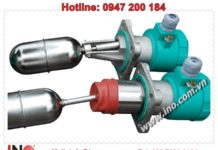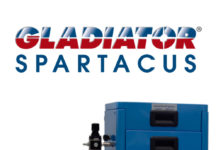MBR MBBR FBBR – Comparison of Wastewater technologies (PART 1)
Các câu hỏi, thắc mắc, thông tin liên quan đến sản phẩm được giới thiệu trong video dưới đây từ khâu mua sắm, lựa chọn, sử dụng, cài đặt hay thay thế, vui lòng liên hệ với INO Team để được hỗ trợ và tư vấn kịp thời.
– – – LƯU Ý – – -: Với những thiết bị không được liệt kê ở đây không có nghĩa là chúng tôi không hỗ trợ được bạn, công ty chúng tôi chuyên đề xuất giải pháp, tư vấn mua sắm và cung cấp thiết bị về cảm biến công nghiệp, đo lường và tự động hoá cho các công ty trong và ngoài nước.
Công ty TNHH Giải pháp và Công nghệ Đo lường INO, nhà cung cấp các thiết bị đo lường và tự động hóa công nghiệp.
3 Minute Water and Waste Water Video Tutorials by AET
MBR, MBBR and FBR are widely used technologies in wastewater treatment especially for industrial applications with a high BOD loading such as food and beverages, dairy, chemical, leachate and others.
As industrial applications usually have volatile water inflows, equalization tanks are used for water storage and eventually PH neutralization as well as flocculation.
Afterwards screens and sometimes clarifiers are used to remove a good number of solids.
MBR stands for Membrane Bio Reactor and is a combination of a membrane process like ultrafiltration and the activated sludge process.
The UF membrane is mostly submerged in the activated sludge basin or in a separate tank. Microorganisms digest the organic matter in sewage under consumption of oxygen. As the membrane retains the microorganisms and organic matter in the basin, higher MLSS concentrations are achieved.
The high microorganism content requires an immense air volume, not only for oxygen supply but also to produce enough mixing, scouring of the membranes and to limit fouling.
MBBR is the short form for Moving bed bio reactor which uses free floating plastic fill media for attached Biofilm growth. To hold the plastic fill media in suspense their density is close to the density of water. Continuous aeration or mixing guarantees a good contact between organic matter and attached biofilm for efficient BOD removal.
FBBR – fixed bed bio reactors work very similar as MBBRs with the difference that the biofilm is attached to fixed fill media blocks. The fill media blocks are usually arranged as submerged, retrievable cages within the basin. Diffused aeration underneath the cage units supplies the biofilm with the required oxygen and controls scouring of the fill media blocks.
Both MBBRs and FBBRs require sludge settling after the biological treatment. For this purpose, lamella clarifiers – as supplied by AET – are installed.
In comparison MBRs don’t require lamella clarifiers because sludge is hold back by the membranes. However, a good portion of sludge must be continuously pumped back to the main basin to limit MLSS concentration increase, and to remove waste sludge.
Web: www.ino.com.vn | Mail: info@ino.com.vn
Tel: (+84) 028 73000184 | Hotline: 0947200184
Website: http://www.ino.com.vn Website: http://www.ino.vn
Please visit INO YouTube Channel for more Video
https://www.youtube.com/inomeasure




















